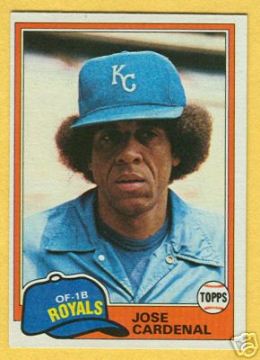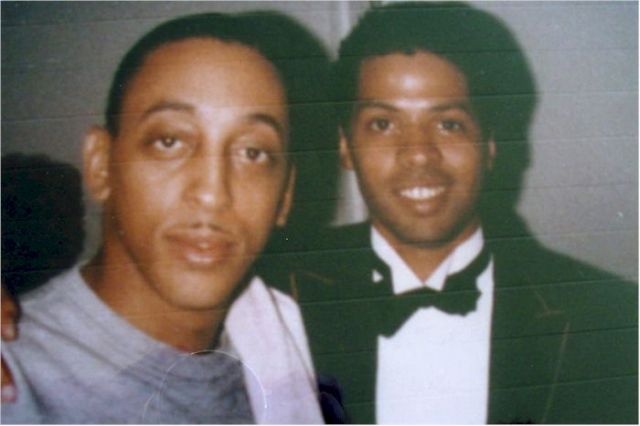If I never hear the name Johan Santana between now and Opening Day, I will be a satisfied baseball fan. The endless rumors surrounding the premier left-hander have basically ruined this Hot Stove League season, holding several other potential blockbuster trades hostage. It’s almost enough to get me to kick the rumor habit—but not quite. The Santana rumors have so dominated Yankee hot stove headlines over the last two months that some members of the media have forgotten that this team has other concerns. Be it first base, the bench, the bullpen, or the back end of the starting rotation, there are plenty of questions to be answered by the time that the Bombers open up their final season at Yankee Stadium.
Yes, Brian Cashman has done well in playing defense this winter, bringing back critical free agents like Jorge Posada, Alex Rodriguez, and Mariano Rivera, re-signing an important complementary piece in Bobby Abreu, and holding on to all of his prized pitching prospects. (Did you know that the Yankees have 25 pitchers on their 40-man roster? That must be some sort of record.) On the other hand, he has done virtually nothing to augment the face of the team’s roster—a roster that produced another first-round exit in the postseason. Outside of LaTroy Hawkins (who will definitely make the team) and Jonathan Albaladejo and Jason Lane (who might not), the Yankees are counting exclusively on internal improvements to address the problems of pitching, first base, and right-handed power (or the lack thereof). Is that the right approach? Conservative baseball thinkers who prefer the reliance on one’s own farm system will likely say yes, while the wheelers and dealers among us will put forth a wholly different response.
With that debate providing a backdrop, let’s take a look at each positional need and what might be done between now and spring training, or at the very least, what needs to happen for the Yankees to avoid the first-half disaster that nearly drowned the team, along with the playoff performance that actually did sink the season.
First base
As he did last winter, Cashman has taken a lackadaisical approach to upgrading the Yankees’ weakest position. Resisting the temptation to trade for a big-time hitter like a Nick Swisher, Cashman seems content to shop at the discount aisle. He cut ties with noodle bats Andy Phillips and Doug Mientkiewicz only to import the Swiss cheese swing of Jason Lane. Frankly, the Yankees would have been better off with Nathan Lane, who can, at the very least, sing and dance. Jason Lane has been simply awful the past two seasons, after slugging .499 for the Astros in 2005. He’s not that young either, a 31-year-old veteran who is well on his way to a journeyman entry in Total Baseball. The signing of Lane tells me that the Yankees are worried that Shelley "Slam" Duncan might not be completely ready for spring training after suffering shoulder blood clots in November. They’re also legitimately concerned about the lack of outfield depth, what with only four real outfielders on the 40-man roster. Lane can play all three outfield positions, will learn first base in the spring, and has the kind of right-handed pop, when his swing is right, that the Yankees crave.
If Lane makes the team as the 13th and final position player, he might platoon with Wilson Betemit. While I’m no great fan of Lane, I’m a huge supporter of Betemit. If the Yankees let him play first base against all right-handers, he’ll hit 20 home runs, reach base 35 per cent of the time, and play the position with range and finesse. That kind of a package would represent a huge improvement over the 2007 trio of Phillips, Mientkiewicz, and Miguel Cairo. Then again, the Yankees might do something stupid and delude themselves into believing that Jason Giambi can play first base every day. Not a good idea. Giambi is the worst defensive first baseman I’ve ever seen; that illustrious group of stone hands includes Richie Sexson, Mo Vaughn, Don Baylor, Jack Clark, and Dave Kingman. (Keep in mind that I never saw Dick "Dr. Strangeglove" Stuart or Zeke Bonura play, but they could both be thrown into this barrel, too.) Giambi is a huge defensive liability the Yankees simply cannot afford to carry, especially with the presence of ground ball pitchers like Chien-Ming Wang and Andy Pettitte.
One other possibility is Brad Wilkerson, a free agent who has received some inquiries from the Yankees. He’s a left-handed version of Lane—he can play the three outfield spots and first base—but has loads more talent and a better pedigree. Even in an off year, Wilkerson hit 20 home runs. He has a history of drawing walks, having drawn 106 free passes in 2004, a trait that has been noted by the Red Sox, as well. (At last report, the Red Sox have offered Wilkerson a one-year deal worth $2 million.)
The Bench
This area already received an upgrade during the second half of 2007 with the call-up of Duncan and the acquisitions of Betemit and Jose Molina. Betemit can fill two roles—platoon first baseman and utility infielder—which is extremely valuable in an era when so many roster spots are soaked up by marginal pitchers. There’s simply no good reason that Betemit can’t fill both roles, backing up Robinson Cano, Derek Jeter, and A-Rod on days when he isn’t needed to play first base. Frankly, this is a method that teams like the Yankees need to embrace in order to become more creative, so that they can cover more positions with fewer bench players. As for the backup catcher, Molina probably won’t hit .318 again, but he’s light years better than Wil Nieves defensively. If Giambi is reduced to a reserve role, the bench becomes even stronger. The biggest question is the lack of right-handed sock, which would be abetted by a healthy Duncan but becomes problematic if Lane makes the club and continues to flail at the plate. Given Lane’s recent history, the lack of legitimate outfield depth behind the front four remains a concern, too.
Along those lines, recent trade rumors involve the outfield. There has been talk of Hideki Matsui being traded to the Padres for prospects, with those prospects then being forwarded to the Twins as part of a package for Santana. If that were to happen, the Yankees would be left with three fulltime outfielders and no legitimate backup. Ultimately, the Yankees would have to acquire another outfielder, be it Wilkerson, Corey Patterson, or some other flychaser to be named later.
Starting Rotation
At one point, I thought the Yankees might pursue a veteran innings eater like Noah Lowry (via trade) or Jon Lieber (free agency), but Cashman seems willing to roll the dice on the three prized right-handers (Chamberlain, Hughes, and Kennedy). Lieber has already signed with the Cubs, while the trade talks involving Lowry cooled off quickly in late December. Realistically, the Yankees need one of the big three to emerge if they expect to contend with the Red Sox, and at least two of the three to thrive if they want to overtake the Sox. Mike Mussina projects as a sometime starter and long reliever, and that’s the kind of secondary role he should play at this late stage of his career. But I have doubts about him successfully becoming the Ramiro Mendoza/Dick Tidrow of the 2008 staff. "Mr. Inflexible" needs 96 hours notice to start, doesn’t like the idea of relieving, and hates anything that breaks his routine. Those aren’t exactly the character traits of someone who can capably fill the swingman role. If not Mussina, the Yankees will likely have to rely on another kid, someone like Alan Horne or Ross Ohlendorf.
The Bullpen
Raise your hand if you’re confident that Kyle Farnsworth can handle the eighth inning. With no hands visible, Joe Girardi seems to be the last man on Earth who believes in Farnsworth. Let’s hope that Girardi can convince Farnsworth to throw a sinking fastball for strikes; if not, the Yankees are in trouble. Hawkins is no more than a sixth or seventh-inning setup option; the smaller his role the better. Ohlendorf and Jose Veras each looked good in September, but their resumes remain questionable. The best hope might be the massive Albaladejo, who’s built like Tim Stoddard and throws like Brian Fisher. He’s the kind of guy that Joe Torre used to ignore but might be receive a longer look from Girardi. From the left side, the options are less appealing. Sean Henn and Kei Igawa were both horrid in 2007, a fact that leaves the Yankees searching yet again for a lefty specialist. In terms of in-house answers, the best solution might be non-roster invite Heath Phillips, who has posted good minor league numbers and has an effective assortment of breaking pitches. There’s been talk of bringing back Ron Villone for a third go-round, but he’s not the answer. Damaso Marte remains available via trade, assuming that Cashman will relent on giving up one B-level prospect in return.
Clearly, the Yankees are crossing their fingers that they can find some gems amidst the rockpile. Realistically, they need one of the unproven right-handers to step up and fill a key late-inning role, and will likely have to find a lefty reliever from the trade market or the scrap heap.
So where does all of this leave the Yankees? The nucleus of the team is set, for better or worse, with a strong reliance on aging hitters to carry the offense and on young pitchers to fill out the starting rotation. But there is still some fine-tuning to be done, especially with regard to the bench and the bullpen. Those areas will need to be closely monitored—and ultimately addressed—during the six-week marathon that is spring training.
***
Finally, I’d like to extend get-well wishes to Yankee blogger Steven Goldman, who is recovering from recent thyroid surgery. While I don’t always agree with Goldman, I find his writing style entertaining and his knowledge of history impressive. The talented Goldman’s writing makes www.yesnetwork.com a good stopping point for Yankee fans.
Bruce Markusen, the author of seven books on baseball, writes "Cooperstown Confidential" for MLB.com.








